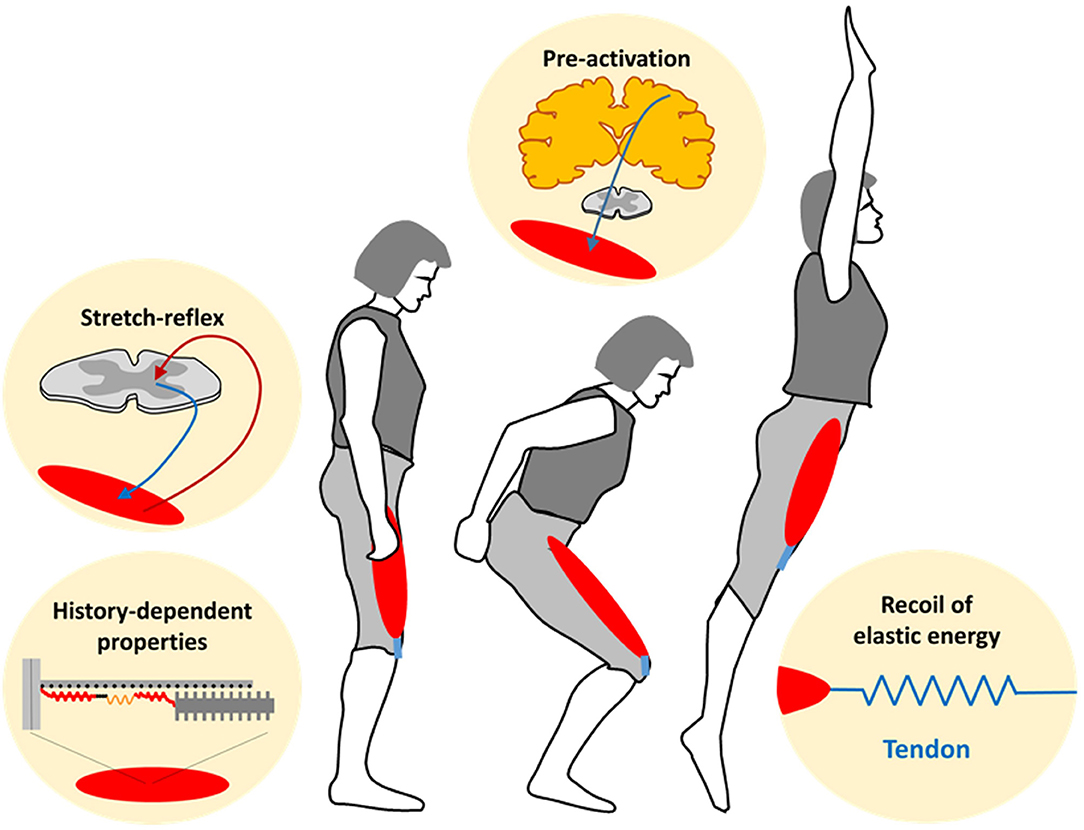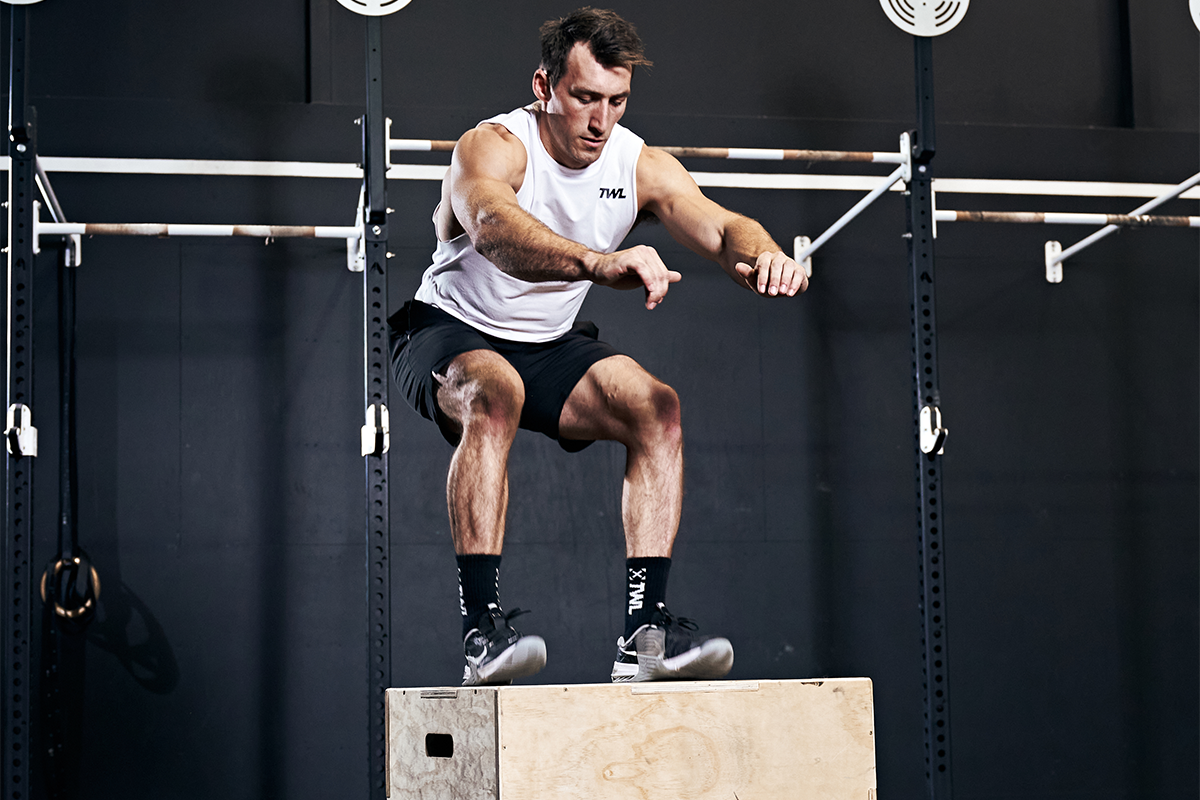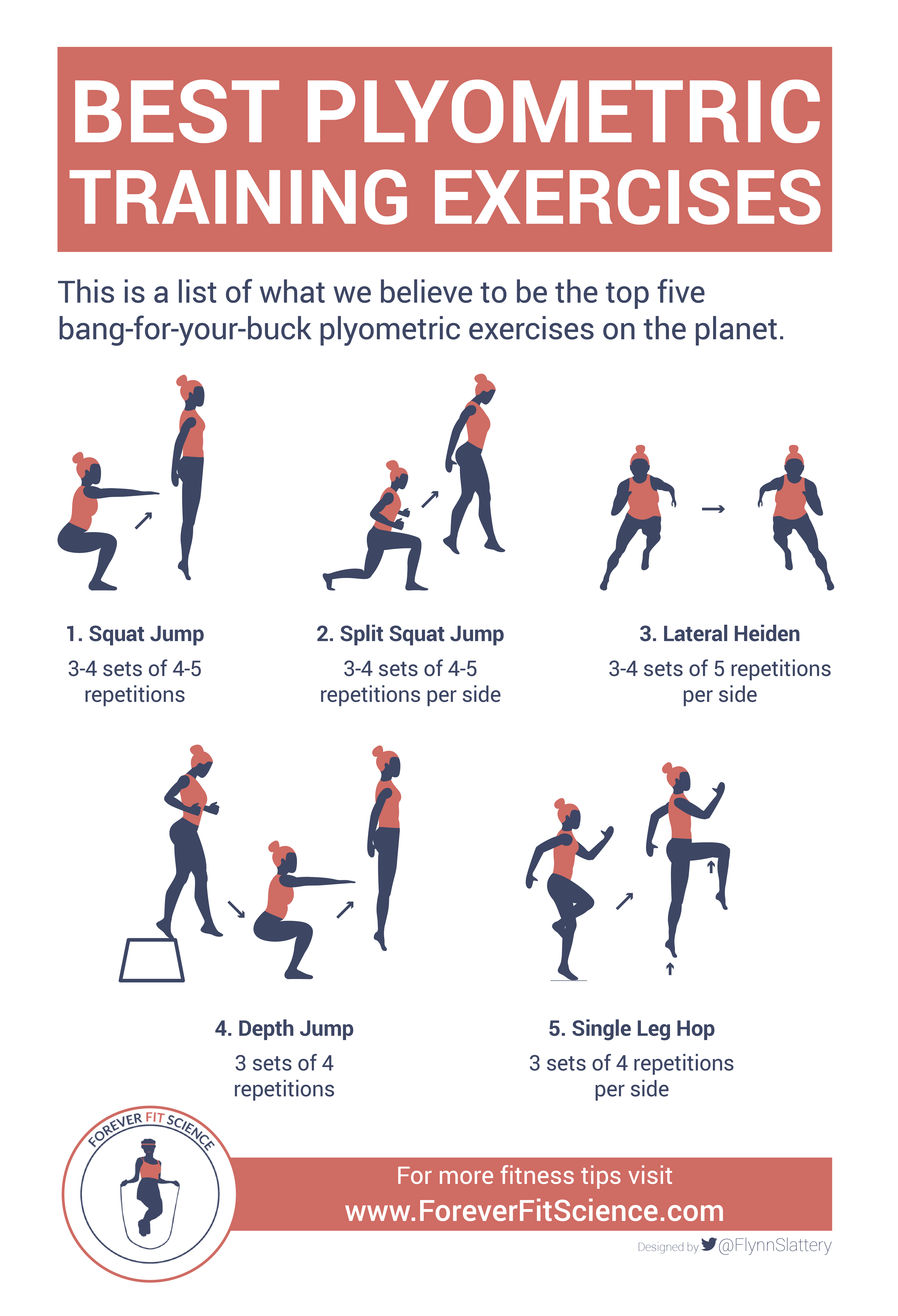Plyometric Workouts: A Key to Elevating Your Jumping Ability
Whether it’s basketball, volleyball, or a simple fitness test, jumping ability plays a significant role in many sports and physical activities. The ability to jump high is not just about natural talent but also about the strength and power of specific muscles. That’s where plyometric workouts come into play, serving as an effective method to enhance your leaping prowess.

Plyometric workouts, often known as ‘jump training’ or ‘plyos,’ involve exercises that aim to increase muscle power, which results in faster, more forceful muscular contractions. These workouts are specifically designed to improve functions like jumping, running, or lifting.
The primary focus of plyometric workouts is on the ‘stretch-shortening cycle’ of muscles, which is the mechanism behind the explosive power exhibited in jumps. The workouts help the muscles to store energy during the ‘stretch’ phase and then release this energy during the ‘shortening’ phase, thus leading to a powerful jump.
The efficacy of plyometric workouts for improving jumping ability is well-documented in various athletic and fitness studies. These workouts stimulate the muscle fibers, leading to increased power and jump height, making them an essential part of any training regime aiming to boost jumping abilities.
When incorporating plyometric workouts into your fitness routine, it’s crucial to remember that these exercises are high-intensity and require proper rest periods for effective results. The frequency of these workouts should ideally be two to three times a week with appropriate rest periods in between.
Safety, too, is paramount. Plyometric exercises should be performed on a soft surface to reduce impact and always start with lower intensity exercises, gradually moving to more advanced ones as your strength and endurance improve.
As the world of fitness evolves, innovative variations of plyometric workouts continue to emerge, making this form of training more accessible and varied. From box jumps to burpees, each exercise targets specific muscle groups, contributing to the overall improvement in jumping ability.
To further motivate you in this journey, there are countless success stories of individuals who have significantly improved their jumping ability through plyometric workouts. These transformations serve as a testament to the effectiveness of plyometric training and its long-term benefits.
In conclusion, plyometric workouts offer a comprehensive approach to improving your jumping ability. It’s not just about the height of the jump, but also about the strength, power, and endurance that comes with regular training. So, why not take a leap towards your fitness goals with plyometrics today?

The Science Behind Jumping
Jumping is a complex physical activity that involves a series of coordinated movements and reactions within the body. When we jump, several muscles and joints work together in a process known as the stretch-shortening cycle. This cycle is the key to the explosive power we see in jumps.
The stretch-shortening cycle involves three phases: the eccentric phase (muscle lengthening), the amortization phase (transition), and the concentric phase (muscle shortening). During a jump, the eccentric phase occurs when the muscles lengthen as we lower our body into a squatting position. The amortization phase is the brief moment we spend in the squatting position, and the concentric phase happens when the muscles shorten, propelling us into the air.
Plyometric workouts for improving jumping ability focus on optimizing this stretch-shortening cycle. These exercises train the muscles to switch quickly from the eccentric phase to the concentric phase, increasing the power and height of the jump.

The primary muscles involved in jumping include the glutes, quadriceps, hamstrings, and calves. Plyometric exercises target these muscles, strengthening them and increasing their power and explosiveness. By doing so, plyometric workouts enhance the body’s ability to perform high-power movements, such as jumping.
However, it’s not just about the muscles. The nervous system also plays a crucial role in jumping. Plyometric workouts train the nervous system to activate the right muscles at the right time, further enhancing jumping performance.
In the future, we could see advancements in technology that allow for more detailed analysis of muscle activation during plyometric exercises. This could lead to the development of even more effective workouts for improving jumping ability.
In conclusion, the science behind jumping is complex, involving various muscles and the nervous system. Plyometric workouts leverage this science to improve jumping ability, making them a valuable tool for athletes and fitness enthusiasts alike.
Understanding Plyometrics
Plyometrics, also known as “jump training” or “plyos,” are exercises that involve rapid stretching and contracting of the muscles, designed to increase strength, speed, and power. This form of training is particularly beneficial for improving jumping ability, a key skill in many sports and physical activities.
The essence of plyometric workouts lies in their ability to train the muscles to go from an extended (eccentric) state to a contracted (concentric) state rapidly. This rapid transition, known as the stretch-shortening cycle, is what gives plyometric exercises their explosive power.

Plyometric workouts for improving jumping ability typically include exercises like box jumps, burpees, and jump squats. These exercises target the lower body muscles – the glutes, quadriceps, hamstrings, and calves – which are crucial for jumping. By strengthening these muscles and training them to contract more quickly and powerfully, plyometric workouts can significantly enhance your jumping ability.
But the benefits of plyometric workouts extend beyond just improved jumping ability. These exercises also improve overall body strength, agility, balance, and coordination. They can also boost athletic performance in sports that require quick, explosive movements, such as basketball, volleyball, and soccer.
In the future, we could see the development of new plyometric exercises and training methods, driven by advancements in sports science and technology. For example, wearable technology could provide real-time feedback on the performance of plyometric exercises, allowing for more personalized and effective workouts.
However, it’s important to note that plyometric workouts are high-intensity and can be challenging for beginners. Therefore, it’s recommended to start with simpler exercises and gradually progress to more advanced ones as your strength and fitness improve. It’s also crucial to perform these exercises with proper form to avoid injury.
In conclusion, plyometric workouts offer a scientifically proven method for improving jumping ability. By understanding the principles behind these exercises and incorporating them into your fitness routine, you can leap higher and perform better in your chosen sports and activities.
How to Incorporate Plyometrics into Your Workout Routine
Plyometric workouts are a powerful tool for improving jumping ability, a skill that is crucial in various sports and physical activities. However, to reap the full benefits of these high-intensity exercises, it’s essential to incorporate them into your workout routine correctly.
The frequency of plyometric workouts is a key factor to consider. These workouts are intense and require significant energy and muscle power. Therefore, it’s recommended to include them in your routine two to three times a week. This frequency allows for adequate recovery between sessions, preventing overtraining and reducing the risk of injury.
The duration of plyometric sessions can vary based on your fitness level and the specific exercises performed. Beginners may start with shorter sessions, gradually increasing the duration as they build strength and endurance. Advanced individuals may engage in longer, more challenging plyometric workouts, tailored to their fitness goals and capabilities.
Rest periods play a vital role in plyometric training. These high-intensity exercises require sufficient recovery time to allow the muscles to adapt and grow stronger. It’s essential to incorporate rest days between plyometric sessions to optimize the benefits and minimize the risk of overuse injuries.

Proper form and technique are paramount when performing plyometric exercises. This not only maximizes their effectiveness but also reduces the risk of injury. As you progress, consider seeking guidance from a fitness professional to ensure that you are performing the exercises correctly and safely.
Looking ahead, advancements in fitness technology could provide innovative ways to incorporate plyometric workouts into individual fitness routines. Real-time feedback and personalized recommendations could optimize workout routines for improved jumping ability and overall athletic performance.
In conclusion, incorporating plyometric workouts into your workout routine requires a strategic approach. By understanding the frequency, duration, and importance of rest periods, you can harness the full potential of these exercises to elevate your jumping ability and achieve your fitness goals. Remember, the journey to improved athletic performance is a marathon, not a sprint. So, take your time, listen to your body, and enjoy the process of becoming a stronger, more powerful athlete.
Top Plyometric Exercises for Jumping
Jumping ability is a crucial aspect of many sports and physical activities. Plyometric workouts, which involve quick, explosive movements, are particularly effective for improving this skill. Here are some top plyometric exercises that can help enhance your jumping ability, regardless of whether you’re a beginner or an advanced athlete.

1. Box Jumps: This exercise involves jumping onto a sturdy box from a standing position and then stepping back down. It’s a fantastic way to improve explosive power in the legs and overall lower body strength.
2. Depth Jumps: For this exercise, you step off a box or platform and immediately explode upward upon landing. Depth jumps are excellent for developing rapid force production and reactive strength, both of which are essential for improving vertical jump height.
3. Tuck Jumps: Tuck jumps involve jumping vertically and bringing the knees up toward the chest before landing. This exercise targets explosive power in the lower body and helps improve coordination and balance.
4. Single-Leg Bounds: This exercise involves leaping forward explosively from one leg to the other, covering as much distance as possible with each bound. Single-leg bounds enhance single-leg power and stability, which is crucial for improving jumping ability in sports that require unilateral explosiveness.
5. Medicine Ball Throws: This exercise involves explosive movements such as overhead throws, chest passes, or rotational throws using a weighted medicine ball. Medicine ball throws help develop upper body power and coordination, which contributes to overall explosive strength for jumping.
6. Plyometric Push-Ups: This exercise involves explosive push-ups where the hands leave the ground at the top of the movement. Plyometric push-ups target the upper body and core, enhancing explosive strength and power transfer from the upper body to the lower body.
7. Squat Jumps: This exercise involves performing a deep squat and then exploding upward into a jump. Squat jumps strengthen the lower body muscles and improve the ability to generate power from a squatting position, which is essential for vertical jumping.
Incorporating these plyometric exercises into your workout routine can significantly enhance your jumping ability. However, it’s important to remember that plyometric training should be approached with caution, especially for beginners. Always ensure that you’re performing these exercises with proper form and technique to avoid injury.
In the future, we could see the development of new plyometric exercises or training methods that further enhance jumping ability. For example, virtual reality technology could be used to provide real-time feedback on form and technique, helping athletes to optimize their plyometric training.
Remember, improving your jumping ability through plyometric workouts is a journey, not a destination. Keep challenging yourself with new exercises and higher goals, and you’ll continue to see improvements in your performance.
Precautions and Safety Measures
While plyometric workouts for improving jumping ability are highly effective, they also come with a certain level of risk if not performed correctly. Therefore, it’s crucial to understand and implement safety measures to prevent injuries and ensure a successful plyometric training experience.

Warm-Up: A comprehensive warm-up routine is essential before starting any plyometric workout. This helps prepare your muscles for the explosive movements involved in plyometrics, reducing the risk of strains or sprains.
Gradual Progression: Plyometric exercises should be introduced gradually into your workout routine. Starting with basic movements and slowly increasing the intensity and complexity can help prevent overexertion and reduce the risk of overuse injuries.
Proper Landing Technique: A significant part of plyometric training involves jumping and landing. It’s crucial to focus on proper landing technique to minimize the impact on your joints. Landing softly with bent knees can help absorb the impact and reduce the risk of joint injuries.
Rest and Recovery: Overtraining can lead to injuries. Therefore, it’s important to incorporate rest periods into your plyometric training routine. This allows your muscles to recover and adapt to the new exercise regimen.
Appropriate Footwear: Wearing the right footwear can make a significant difference in your plyometric training. Shoes with good cushioning can help absorb the impact of jumping and landing, reducing the strain on your feet and lower body.
Professional Guidance: If you’re new to plyometric training, it’s advisable to seek guidance from a fitness professional. They can provide valuable insights into proper form, technique, and progression, reducing the risk of injury.
In the future, advancements in sports science and wearable technology could provide real-time feedback on form and technique during plyometric exercises. This could further enhance safety and effectiveness, making plyometric workouts even more beneficial for improving jumping ability.
Remember, safety should always be a priority when engaging in any form of physical activity. By following these precautions and safety measures, you can enjoy the benefits of plyometric workouts while minimizing the risk of injury. So, leap towards your goals with plyometrics, but do so with caution and mindfulness.
Real Stories: Transformations Through Plyometrics
The transformative power of plyometric workouts for improving jumping ability is best illustrated through real-life success stories. These narratives not only provide evidence of the effectiveness of plyometrics but also serve as a source of inspiration for those embarking on their own fitness journeys.
Consider the story of a basketball player named Alex. Despite his passion for the sport, Alex always struggled with his vertical jump, a crucial skill in basketball. Determined to improve, he incorporated plyometric workouts into his training regimen. After several months of consistent training, Alex noticed a significant improvement in his jumping ability, which greatly enhanced his performance on the court.
Next, meet Lisa, a track and field athlete specializing in the high jump. Despite her natural athleticism, Lisa found herself hitting a plateau in her performance. Upon integrating plyometric workouts into her training, she experienced a breakthrough, achieving new personal bests in her events.
Finally, there’s the story of Sam, a fitness enthusiast with no specific sport focus but a desire to improve his overall athleticism. Sam incorporated plyometric workouts into his routine, focusing on exercises designed to improve jumping ability. Over time, he noticed a marked improvement in his vertical leap, demonstrating the versatility of plyometric training.
These stories underscore the potential of plyometric workouts to significantly improve jumping ability, regardless of one’s athletic discipline. They serve as a testament to the power of dedication, consistency, and the right training approach.
In the future, it would be interesting to see more comprehensive studies tracking the progress of individuals engaging in plyometric workouts. Such research could provide valuable insights into the most effective exercises and training regimens, further enhancing our understanding of plyometric training.
Remember, every fitness journey is unique, and results can vary based on factors like individual body composition, consistency, and technique. However, as these stories illustrate, with dedication and the right approach, significant improvements are within reach. So, why not start your plyometric journey today and see how far you can leap towards your fitness goals?
Conclusion: Leap Towards Your Goals with Plyometrics
In the journey of fitness and athleticism, plyometric workouts for improving jumping ability have emerged as a powerful tool. From understanding the science behind jumping to incorporating plyometrics into your workout routine, each step brings you closer to achieving your fitness goals.

The transformative power of plyometrics is evident in the real-life success stories of individuals who have significantly improved their jumping ability. These stories serve as a testament to the effectiveness of plyometric workouts and provide motivation for those embarking on their own fitness journeys.
As we move forward, it’s crucial to continue exploring and innovating in the field of plyometrics. Future advancements in sports science and technology could offer new insights into the most effective plyometric exercises and training regimens. This could lead to even greater improvements in jumping ability and overall athletic performance.
However, it’s important to remember that every fitness journey is unique. Results can vary based on factors such as individual body composition, consistency, and technique. Therefore, it’s essential to approach your plyometric training with patience and dedication.
In conclusion, plyometric workouts offer a promising avenue for improving jumping ability. Whether you’re an athlete looking to enhance your performance or a fitness enthusiast aiming to reach new heights, plyometrics can help you leap towards your goals.
So, why wait? Start incorporating plyometric workouts into your routine today and witness the remarkable improvements in your jumping ability. And don’t forget to share your progress and success stories with us. Your journey could serve as an inspiration for others and contribute to the growing body of evidence supporting the effectiveness of plyometric workouts.
Remember, the sky’s the limit when it comes to your fitness goals. So, leap towards them with plyometrics!

